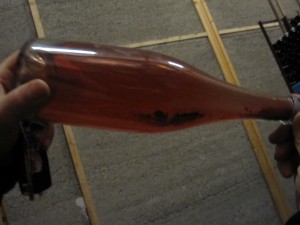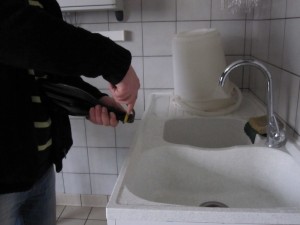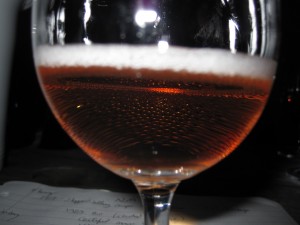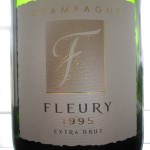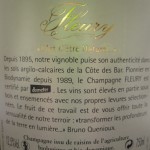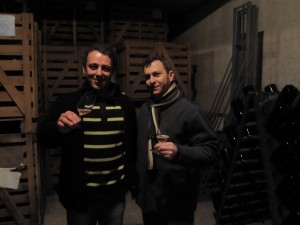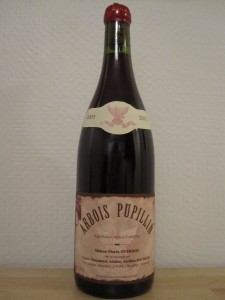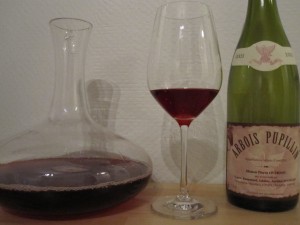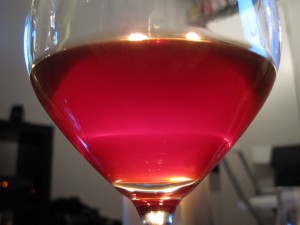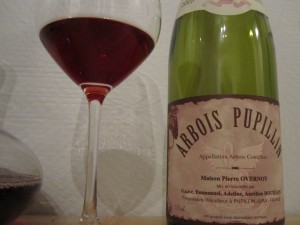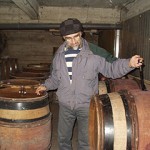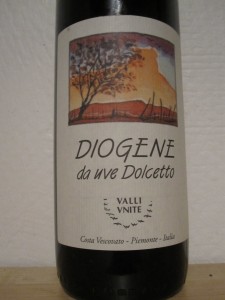 What?! A cooperative making wines without the addition of Sulfur?! Is this possible? Yes it is! The Valli Unite coop in Alessandria, Piemonte was formed over 30 years ago by three men who merged their vineyards and built stalls for their farm animals in order to use organic manure. They saw organic farming as the way of the future, and from this was born the Valli Unite coop.
What?! A cooperative making wines without the addition of Sulfur?! Is this possible? Yes it is! The Valli Unite coop in Alessandria, Piemonte was formed over 30 years ago by three men who merged their vineyards and built stalls for their farm animals in order to use organic manure. They saw organic farming as the way of the future, and from this was born the Valli Unite coop.
Today, they are a group of 25 people working together. Their viticulture follows closely the belief that wine drinkers should drink little, but well. In their wine production, the aim is to let the wine remain as alive as possible so that it is the true reflection of the grape. They use old cement vats to ferment their reds later transferring them to barrels. This wine was bottled without filtration. No sulfur was used from the beginning of fermentation to time of bottling. Here are my thoughts:
Date Tasted: November 7th, 2010 20:42 (8:42pm) – decanted after 5 minutes
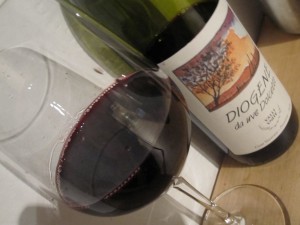 Appearance: Dark purple with light purple edges. Great color extraction and very young in appearance.
Appearance: Dark purple with light purple edges. Great color extraction and very young in appearance.
Nose: Dark berries, especially black berries with fresh red fruits in the background. «frutti di bosco» (forest berries). Slightly reductive… will decant… purple gooseberries and hints of barnyard and crushed, dried leafs. Smells like a freshly fermented wine.
Palate: slight fizz on the tongue, very slight. Frutti di bosco all the way with tremendous structure, medium (ripe) acidity and gripping tannins. Medium length finish (approx 20 seconds). A very structured wine that has lot’s of mouth feel. I don’t mean «velvety» – rather chewy, rustic and a bit «rough». Well integrated 13.5% alcohol. Not an elegant wine, but a very honest wine which begs for grilled sausage.
21:10 (9:10pm) almost half hour in decanter
Nose: The wine is much more floral (roses) now then before. The reductive notes have fallen to the background and are no longer as noticeable.
Palate: some sour red plums on the finish now. Tannins have stepped up a bit and now dominate a bit.
November 8th, 21:52 (9:52pm)
Nose: more fruit showing and less reduction. Tree bark. Blackberries and raspberries. Also some black currants and purple gooseberries. Very slight hints of dark licorice and bitter almonds (like found in the pit of a peach)
Palate: Still has very grippy tannins, really feels like you are chewing on the pips of the freshly picked grapes. Pure fruit quality in my opinion. Mostly dark berries, but yet a fresh wine. Hints of licorice and dried leafs. Again, really strong character of pure grapes and the pips. Really more open then yesterday. A slightly bitter finish. Really enjoying this wine today – just like eating the grapes off the vine. Picture this – you walk into a vineyard and grab a handful, and I mean a handful, of healthy, ripe dolcetto grapes and just pop them in your mouth. This should give the idea of the how this wine is every time I take a sip. This is one unsulfured wines which I feel could benefit from some storage – let’s say a year or two? And you know I love my wines young.
November 9th, 18:15 (6:15pm)
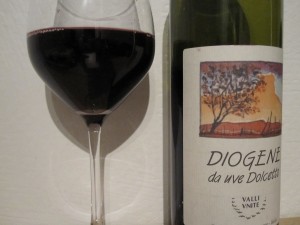 Nose: More earth and dark berries. Hints of lavender. Alcohol also more noticeable on the nose than it was in previous days.
Nose: More earth and dark berries. Hints of lavender. Alcohol also more noticeable on the nose than it was in previous days.
Palate: A bit rounder today. Tannins softened a bit. The finish is a bit more leafy. Just as fresh as the first day opened, but the tannins seem a bit more integrated today and the finish is more «almondy» now, which I love. Alcohol still not noticeable on the palate, well integrated.
I drank the last glass and a half with a homemade burger topped with white cheddar, caramelized onions and avocado… gotta say that the wine was a bit too much for the burger, even with the cheese and onions. Although Dolcetto’s are often paired with «carne cruda» (or beef tartare) with the raw egg and the fixings in Piemonte, this dolcetto would be too much in my opinion. Try this wine with another Piemontese speciality, fresh pasta with rabbit ragu. Or if you are in Norway, like I am, try with some duck confit. With the wild flavors of the duck, this wine should pair well.
]]>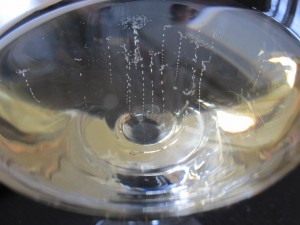 Champagne Fleury S.A.
43 Grande Rue
10250 Courteron – France
tel: (+33) 03.25.38.20.28
Champagne Fleury S.A.
43 Grande Rue
10250 Courteron – France
tel: (+33) 03.25.38.20.28
The Fleury family used to grow grapes to sell to other Champagne houses. They stopped doing this in 1929 due to the financial crisis and produced their first vintage that year. In 1989 they converted to Biodynamic viticulture – the first house in Champagne to do so – the first plot to convert being a small 3ha plot. They were officially certified in 1992 and they had their first certified biodynamic vintage in 1995. Today, they own about 15ha and purchase another 12ha of biodynamically farmed grapes. They have an annual production of approx 200,000 bottles.
I was lucky enough to meet Jean-Sébastien Fleury at the Bio Millésime fair in Montpellier earlier this year (thanks Alice Feiring!). And by lucky I do mean lucky. I rarely get excited about Champagne anymore. Even though the king of sparkling wines can still make me smile from time to time, I rarely find myself smiling from ear to ear. His wines are just amazing. I smiled from ear to ear from the very first sip of the absolutely fantastic 1992 all the way to the his BdN that had been bottled without the addition of any SO2. I was so impressed in fact that I set up a meeting to go visit him and his Champagne house the next week.
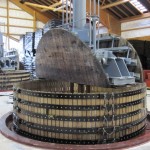
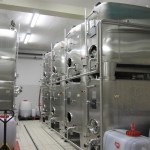 We arrived at the Fleury house around 9 on a cold Friday morning in February. We were greeted by Jean-Sébastien who promptly took us on a tour of the winery and gave us a quick history of his (family’s) estate. We got to see his rosé’s still resting on it’s lees, his press and the cellar where all the wines waiting to be disgorged were “maturing”.
We arrived at the Fleury house around 9 on a cold Friday morning in February. We were greeted by Jean-Sébastien who promptly took us on a tour of the winery and gave us a quick history of his (family’s) estate. We got to see his rosé’s still resting on it’s lees, his press and the cellar where all the wines waiting to be disgorged were “maturing”.
After this tour and introduction to the estate, he proceeded to disgorge some wines for us that were resting at a downward angle in a brine solution so that they were ready to be disgorged (for our pleasure & sans dosage of course!). Here’s a list and quick description of what he disgorged for us:
- 1988 – 100% Pinot Noir “Young & Energetic”
- 1990 – 100% Pinot Noir (under crown-cap) – “Fresh and rich”
- 1990 – 100% Pinot Noir – Biodynamic (under cork) – “more ‘complex’ than the crown cap ’90. What a difference!”
- 1992 – 100% Pinot Noir – Biodynamic & “Stunning!!”
- 2008 – Sans Soufre – experimental. “WOW!!!”
Date Tasted: April 25, 2010 17:05 (5:05pm)
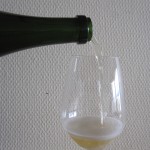
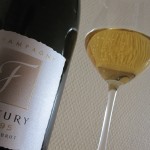 Appearance: Medium golden yellow with slight development visible. very delicate mouse flowing in 9 or 10 streams emanating from the center of the glass.
Appearance: Medium golden yellow with slight development visible. very delicate mouse flowing in 9 or 10 streams emanating from the center of the glass.
Nose: Nice ripe yellow apples and nice autolysis, with loads of freshness. Yellow biscuits, ripe, healthy fruit with slightly wild aromas. Development also on the nose. Overall, A beautiful nose and bouquet.
Palate: Very, very dry, with no or very little residual sugar. Delicate mousse helping to disperse the wine in the mouth. Coats the mouth very well with lemons, sour yellow apples and a long, autolytic finish with great balanced acidity and hints of mineral and yeast. Finish is ongoing and changing with the notes of yeast and biscuits really coming through about 15 seconds after swallowing. Very impressive acidity and freshness. Juicy, yummy and very drinkable (in my opinion, storable for up to 5-7 more years – depending on your palate)
17:30 (5:30pm)
Aromas of marzipan starting to emerge now. On the palate, the acidity settling a bit (temperature), becoming rounder and more delicate. A stunner…
This is definitely a Champagne for those who like them dry and acidic, and with the yummy ripe fruit, not unbalanced in the slightest. A seemingly never-ending finish..wow
]]>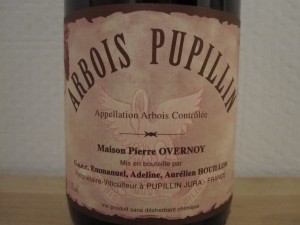 Located East of Burgundy approaching Switzerland, the Jura is perhaps more “known” for it’s white wines made with the Chardonnay and Savagnin grapes. For example, the slightly oxidized, “flor-enhanced” Vin Jaune. However the “reds” made with the Poulsard grape (as found in this bottle), are perhaps more interesting.. At least to me..
Located East of Burgundy approaching Switzerland, the Jura is perhaps more “known” for it’s white wines made with the Chardonnay and Savagnin grapes. For example, the slightly oxidized, “flor-enhanced” Vin Jaune. However the “reds” made with the Poulsard grape (as found in this bottle), are perhaps more interesting.. At least to me..
After Pierre Overnoy retired, the Houillon family took over the domain. They have continued in the same manner as Overnoy (from what I understand). That is, as close to natural viticulture as possible and the same goes for the wine making. No added anything here, not even my least favorite friend, Sulfur Dioxide. I have tasted both the reds and the whites of Overnoy and I have to say they are amongst my favorite wines… of all time, placing comfortably in my top 9 list (coming soon!) of all time favorites.
For many years, the only wines of the Jura I had tasted had been those of Tissot. Although the wines of Tissot are good, they don’t approach the quality of Overnoy’s wines in my opinion. Tissot’s wines can seem a bit “dirty” by comparison (again, my opinion).
Date tasted: Sunday February 21, 2010 18:45 (6:45pm) – Decanted
WOW!!!!
and…… 1 hour and 15 minutes later @ 20:00 (8pm)
HUH???
When I first opened this wine – it was exactly as I remembered it and expected it to be. A gorgeous, light red color not unlike what fresh squeezed raspberries or cranberries might look like. In fact, the similarities don’t stop here. The nose was of pure, fresh raspberries and cranberries with delicate spices. Background aromas of cherries, stems and pits. It had that typical “sponty” (spontaneous) nose and was slightly volatile , in that way that we natural wine lovers really appreciate, helping those aromas float up to our noses. Slight animal and mineral tones also noted on the very back. The same was found on the palate.
This wine was very alive and it was making me jump out of my chair with every smell and with every taste.
BUT, within a little over an hour, my friend and I were looking at each other and asking “huh??”. What the hell happened! The wine was almost completely dead. I don’t normally decant a wine like this. So why the hell did I do it tonight? Was that the problem? First of all, I will never decant this wine again, just in case. Second, I will continue to drink the wines of Overnoy because they are so incredibly seductive. Finally, in the future I won’t take an hour to drink a bottle of Overnoy again! Oh, I should mention that I had only brought the wine back with me from France two weeks prior – travel sickness??
Cheers!
]]>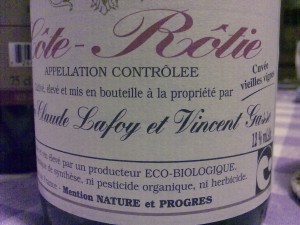 Date tasted: October 8th, 2009 at 23:00
Date tasted: October 8th, 2009 at 23:00
The Philosopher Grower Vincent Gasse lives just outside the main village of Ampuis, in the northern hamlet of Verenay, in the AOC Côte-Rôtie. From here he conducts his private campaign – to solve the conflict of making truly organic wine off slopes that crumble when you hand work their soil.
Vincent likes to stay out of the limelight. At 60 he is professorial, with a beard and what could be called wild hair, prominent bushy eyebrows, and glasses. In 2004 he decided to hang up his boots, and made just four casks of Côte-Rôtie from his plot on Le Goutay. His 1.3 hectares of vineyards, spread across five plots – Côte Rozier, Leyat, and Le Goutay on the full slopes and Bonnivière and Ritolas nearer the plateau – have been rented out to his fellow worker of the past seven years, Stéphane Otheguy. The oldest are Leyat and Bonnivière – both around 1945-1955 and planted by Marie Lafoy’s father, Pierre. The rest vary between 1985-1999.
Vincent makes his wine in the most constructive way possible since he feels strongly that the world’s resources are being rapidly depleted. He therefore carefully selects his vine stock, takes special care in the vineyards and when he makes the wine.
Vincent works organically (éco-biologique) and says that there are enormous extra costs in doing so. “The one big problem, he says, is how to work the soil – the rest of the issues can be solved”
“On slopes, manual weeding and working will take 1,000-plus hours, versus just 10 hours if you spray weedkiller,” he continues. “Say the weather is bad, you go up to 1,500 hours. And where are you going to find the people prepared to do this hard work? The challenge lies in the very word ‘Côte-Rôtie’ – which the next generation is going to have to find an answer to if they want to make true organic farming here economically sound.”
His first destalking was in the early 1990’s and vinification was in one open wood and one open concrete vat. No cultured yeasts have ever been used, and after a cool maceration, vinification would last over three weeks.
The two-year ageing was done in used 228-liter casks (of 2nd, 3rd or 4th passing). All the wine was bottled, without fining or filtration. The first bottling was in 1988, and there was Cuvée Sophia made from under 20-year Syrah off Côte Rozier and Ritolas, and a Vieilles Vignes (for this tasting note) from old vines that are purely massale selection (the practice of propagating new plant material from numerous selected mother vines in the vineyard), without any clonal presence.
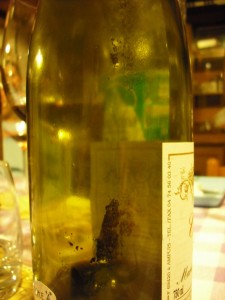 Soil: Schist and clay
0,4 ha organic vineyard
Guyot system
8800 vines per hectare
55 year average age of vines
39,5hl per hectare
100% hand harvest
Spontaneous fermentation
22 months on the fine lees in used barriques
No clarification or filtration
25 mg/liter total SO2
2100 bottles produced
Soil: Schist and clay
0,4 ha organic vineyard
Guyot system
8800 vines per hectare
55 year average age of vines
39,5hl per hectare
100% hand harvest
Spontaneous fermentation
22 months on the fine lees in used barriques
No clarification or filtration
25 mg/liter total SO2
2100 bottles produced
Tasting Notes:
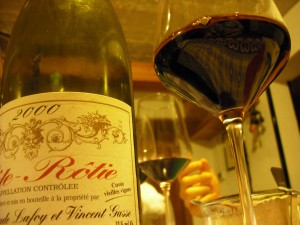 Appearance: Dark purplish-red with slight brownish edge. Medium plus intensity.
Appearance: Dark purplish-red with slight brownish edge. Medium plus intensity.
Nose: Medium intense, highly complex wine with aromas of cranberries, blackberries and wild raspberries. Spice, white pepper with a mineral backbone. Extremely complex bouquet with hints of black olives. Very intriguing and complex nose. Enticing.
Palate: Blackberries, wild cherries, cranberries, spice, dark olives with gripping medium level tannins with medium/high, mature acidity that carries the wine to a seemingly never-ending mineral finish. Very balanced and an impressive wine with only 12% alcohol. Very fresh and very drinkable. One of the freshest and lightest, yet concentrated Côte-Rôtie’s I’ve tasted. An impressive feat considering the very warm 2000 vintage which typically produced high alcohol, jammy wines.
(Thanks to John Livingstone-Learmonth’s “The Wines of the Northern Rhône” pages 93-95 for the Domaine and Vincent Gasse information used in this post)
]]>
